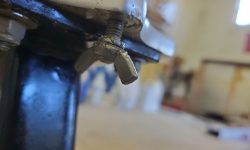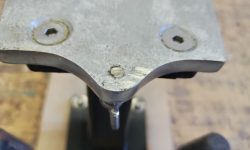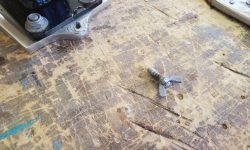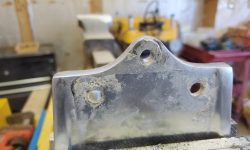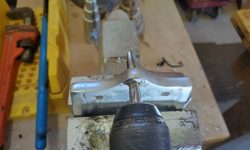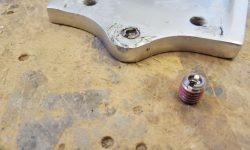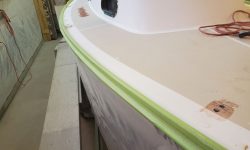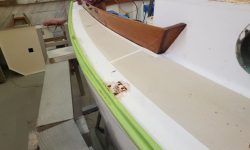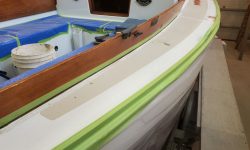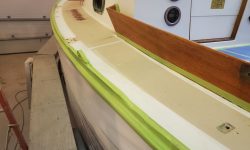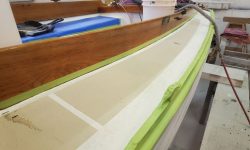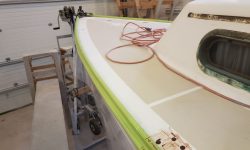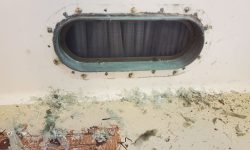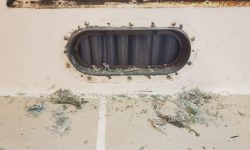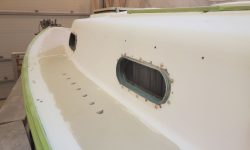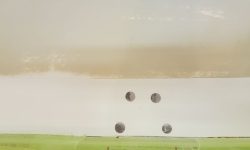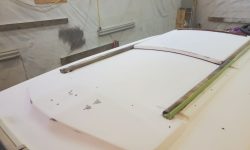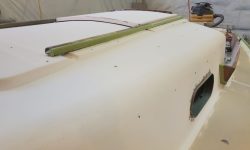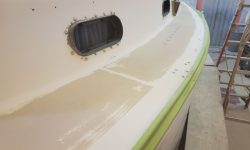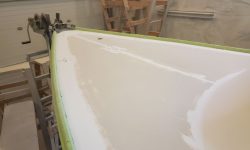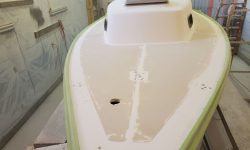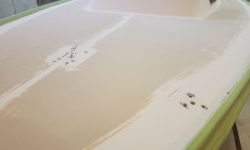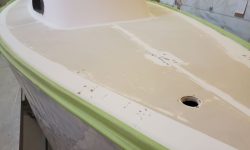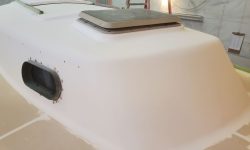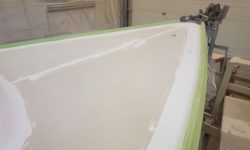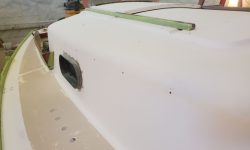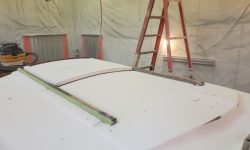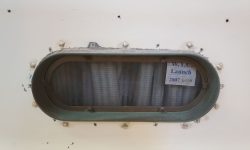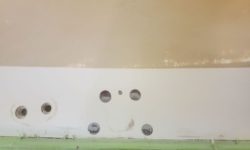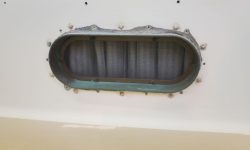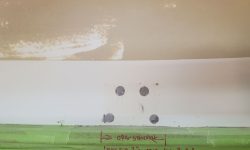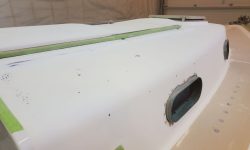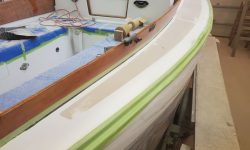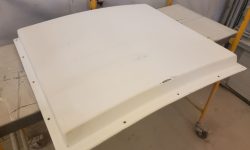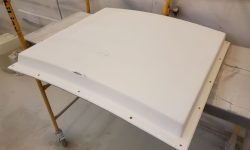November 15, 2021
Arietta Phase 2-10
Monday
When the owner first delivered the boat this fall, he showed me how the setscrew on the outboard bracket had seized during the summer (stainless steel screw in an aluminum bracket), rendering it unremovable. Over the weeks since, in short sessions here and there as time allowed (the latest over the weekend), I extensively soaked the frozen fastener in penetrating solvent and made various attempts at removal, eventually succeeding by drilling out the fastener from the back side, leaving a slightly misshapen hole since the bit wandered a bit.
To repair the hole and hopefully to better avoid the seizing problem in the future, I installed a stainless steel threaded insert, drilling and tapping the aluminum to accept the insert with its coating of permanent red Loctite, which, once fully set, would (at least theoretically) hold the insert from turning when the setscrew was used. I’d source a new thumbscrew to complete this small task.
Before beginning the bulk surface prep on the main decks, I masked off the toerails and a few other areas for added protection during the initial rounds of sanding, mainly for the areas adjacent to where I’d be sanding. I expected to need to replace some of this tape later, before the painting steps.
With a sharp scraper, I removed the excess sealant from the ports from the areas beneath the trim rings, removing as much of the residue as possible.
I spent the remainder of the day sanding the decks, including the cabin trunk, companionway hatch, sea hood, and all main deck areas. In all areas, I sanded smooth the original molded (gelcoat) nonskid pattern, particularly easing the edges where the nonskid met the smooth areas. This initial pass, in addition to removing the old nonskid, was the first of several rounds of sanding to smooth, clean, and otherwise abrade all areas to be painted. I used 80 grit paper on a 5″ DA for this round, as the original gelcoat nonskid was soft enough not to require more aggressive grits to start.
With this complete, I switched to a 4″ palm sander and hand work to sand the entire area again, focusing now on the edges and corners where the more powerful tool couldn’t safely reach. By the end of this round, the decks were fully prepared for the next steps, which would include grinding out and filling various cracks, dings, and other areas, along with additional work on the hole filling I’d begun earlier.
Total time billed on this job today: 7.5 hours
0600 Weather Observation: 40°, light rain. Forecast for the day: Showers, gradual clearing, 45°



